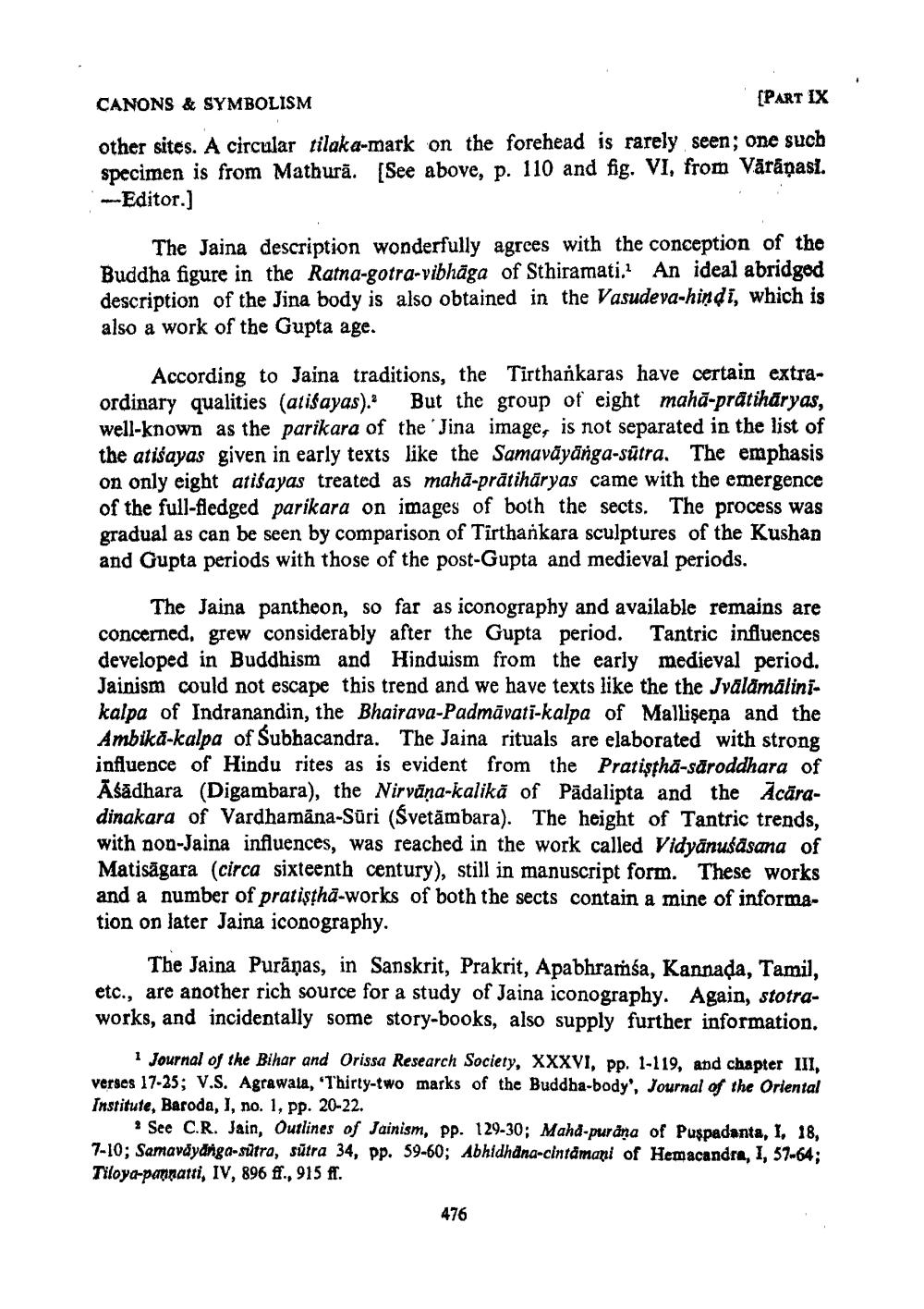________________
CANONS & SYMBOLISM
(PART IX
other sites. A circular tilaka-mark on the forehead is rarely seen; one such specimen is from Mathurā. (See above, p. 110 and fig. VI, from Vārāṇasi. -Editor.)
The Jaina description wonderfully agrees with the conception of the Buddha figure in the Ratna-gotra-vibhäga of Sthiramati. An ideal abridged description of the Jina body is also obtained in the Vasudeva-hindi, which is also a work of the Gupta age.
According to Jaina traditions, the Tirthankaras have certain extraordinary qualities (arisayas). But the group of eight mahā-prätihäryas, well-known as the parikara of the 'Jina image, is not separated in the list of the atiśayas given in early texts like the Samavāyānga-sütra. The emphasis on only eight atisayas treated as mahā-prātihāryas came with the emergence of the full-fledged parikara on images of both the sects. The process was gradual as can be seen by comparison of Tirthankara sculptures of the Kushan and Gupta periods with those of the post-Gupta and medieval periods.
The Jaina pantheon, so far as iconography and available remains are concerned, grew considerably after the Gupta period. Tantric influences developed in Buddhism and Hinduism from the early medieval period. Jainism could not escape this trend and we have texts like the the Jvalämálinikalpa of Indranandin, the Bhairava-Padmāvati-kalpa of Mallişena and the Ambika-kalpa of Subhacandra. The Jaina rituals are elaborated with strong influence of Hindu rites as is evident from the Pratişthă-săroddhara of Ašādhara (Digambara), the Nirvana-kalikā of Pädalipta and the Acāradinakara of Vardhamana-Süri (Svetämbara). The height of Tantric trends, with non-Jaina influences, was reached in the work called Vidyānusāsana of Matisāgara (circa sixteenth century), still in manuscript form. These works and a number of pratisha-works of both the sects contain a mine of information on later Jaina iconography.
The Jaina Puräņas, in Sanskrit, Prakrit, Apabhramsa, Kannada, Tamil, etc., are another rich source for a study of Jaina iconography. Again, stotraworks, and incidentally some story-books, also supply further information.
1 Journal of the Bihar and Orissa Research Society, XXXVI, pp. 1-119, and chapter III, verses 17-25; V.S. Agrawala, 'Thirty-two marks of the Buddha-body', Journal of the Oriental Institute, Baroda, 1, no. 1, pp. 20-22.
? See C.R. Jain, Outlines of Jainism, pp. 129-30; Mahd-purana of Puspadanta, 1, 18, 7-10; Samavayanga-sūtra, sūtra 34, pp. 59-60; Abhidhdna-cintamani of Hemacandra, 1, 57-64; Tiloya-pannatri, IV, 896 ff., 915 fr.
476




